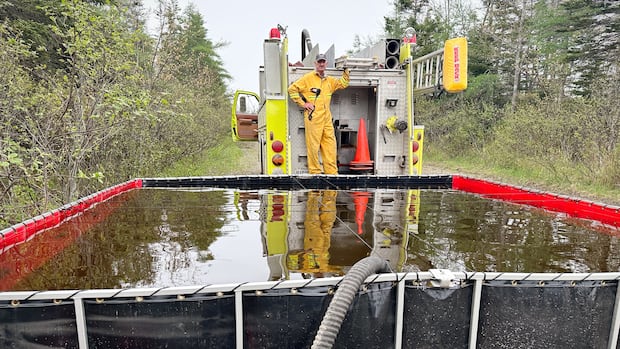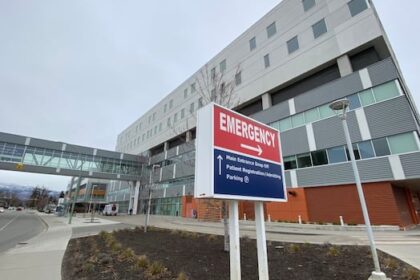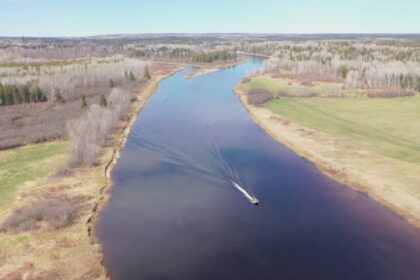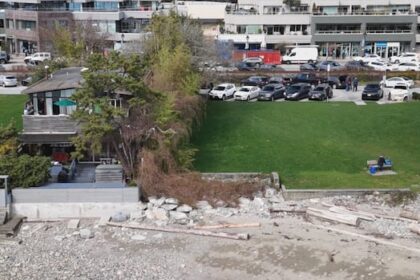Nova ScotiaWith streams and ponds running dry, fire chiefs say they’re having to rely on neighbouring departments to haul water from farther away when responding to fire calls.Fire departments struggling to find water supply with streams, ponds running dryTom Ayers · CBC News · Posted: Oct 22, 2025 4:22 PM EDT | Last Updated: 3 hours agoKenneth Cook of the Grand River volunteer fire department in Richmond County, N.S., loads a portatank with water from a stream during a wildfire near Framboise in May 2025. (Tom Ayers/CBC)Residential wells, streams and ponds are running out of water, sparking concern for homeowners and putting pressure on rural firefighters across southern Cape Breton Island.Paul Sheers, chief of Inverness County’s West Bay Road Volunteer Fire Department, said he’s never seen levels so low.”The brooks that we would possibly draw from, the rivers we could possibly draw from, are pretty much empty, bone dry,” he told CBC Radio’s Information Morning Cape Breton. “It’s been a very stressful summer for us because in rural areas, it’s very hard to get water.”In July, West Bay Road firefighters had to haul water 21 kilometres to a structure fire in Glendale, Sheers said.The county has installed some dry hydrants — pipes connected to streams and ponds that firefighters can use to pump water when needed — but the one that’s three kilometres away in Glendale has been out of service for the last four years, he said.In the meantime, the fire department has had to buy extra gear, such as pumps, to draw water from local water sources, but those near the Glendale fire were unusable due to the drought, Sheers added. “All you’re going to do is suck air,” he said.Members of the L’Ardoise volunteer fire department use a portable pump to reload a truck from a stream near Framboise during a wildfire in Richmond County, N.S., in May 2025. (Tom Ayers/CBC)Climate change is making dry hydrants and portable pumps increasingly difficult to use, Sheers said.Fire Chief Jim Cavanaugh said the Port Hastings volunteer department is having similar problems.”If we’re lucky enough to be within the vicinity of a municipal water source, one of the hydrants, well, great,” he said.”If not, we start calling in what we call shuttle tankers from other departments.”Hauling water from farther awayCavanaugh said that takes time away from fighting a fire and draws other departments away from their areas.They used to just call in one neighbouring crew, but that’s changed, he said.”You’re bringing in five or six departments from some 30 miles away to help shuttle water.”Last year, the Port Hastings department scouted 14 areas where they used to get water and only two were good, Cavanaugh said.This year, the water was too low in both of those to be of any use.Volunteer firefighters from Marion Bridge, Cape Breton Regional Municipality, N.S., haul water to a portatank near Framboise, Richmond County, during a wildfire in May 2025. (Tom Ayers/CBC)Exceptional drought — the most extreme category on the national scale — is affecting several areas in New Brunswick and Nova Scotia , with parts of southern Cape Breton Island suffering extreme drought conditions, according to the Canadian Drought Monitor.Bruce MacDonald, manager of Cape Breton Regional Municipality’s Emergency Management Office, said water levels in CBRM are also low.”A lot of our lakes are low, so we did an assessment of 25 dry hydrant locations. We found five of those, the water level was too low to access and utilize the dry hydrants, and one required repair,” he said.The municipal water supply, which is fed by several underground wells, is low, but not critical, MacDonald said.Conservation urgedCBRM is urging people to conserve water, but it is not mandatory.People with personal wells in rural areas are experiencing low water levels or wells that have run dry.Daphne LeBlanc was using a laundromat in Sydney this week, saying she was saving water at her home in Grand Mira North.She said her neighbours’ wells had gone dry, but hers was low.”I’ve just been babying it since probably end of June, July,” she said.CBRM’s manager of emergency management, Bruce MacDonald, says CBRM is asking residents with low or no water to call 311 and register for a number of aid programs. (Tom Ayers/CBC)LeBlanc is also collecting water from rain barrels and a dehumidifier for the toilet. She and her neighbours are going to a nearby campground for showers.”I just feel bad for everybody because we’re all in it together,” LeBlanc said. “It’s take one day at a time and pray for rain.”MacDonald said CBRM is asking residents with low or no water to call 311 and register for a number of aid programs.He said about 180 families have registered so far and can get vouchers for free drinking water from several grocery stores.They can also pick up bulk water for personal use or for livestock operations. Showers are available in Sydney, North Sydney and Glace Bay.Programs could change soonHomeowners can also apply to the province for funding to help with repair costs to improve their water supply, MacDonald said.He cautioned that programs could change soon with colder weather coming.Municipal hydrants will not be available for bulk water in winter, and once the ground freezes, precipitation will not be able to replenish the water table.MacDonald also expressed concern over the long-range forecast, which calls for below-average precipitation.MORE TOP STORIESABOUT THE AUTHORTom Ayers has been a reporter and editor for 39 years. He has spent the last 21 covering Cape Breton and Nova Scotia stories. You can reach him at tom.ayers@cbc.ca.With files from Information Morning Cape Breton
Drought causing worry for homeowners, rural firefighters in Cape Breton










